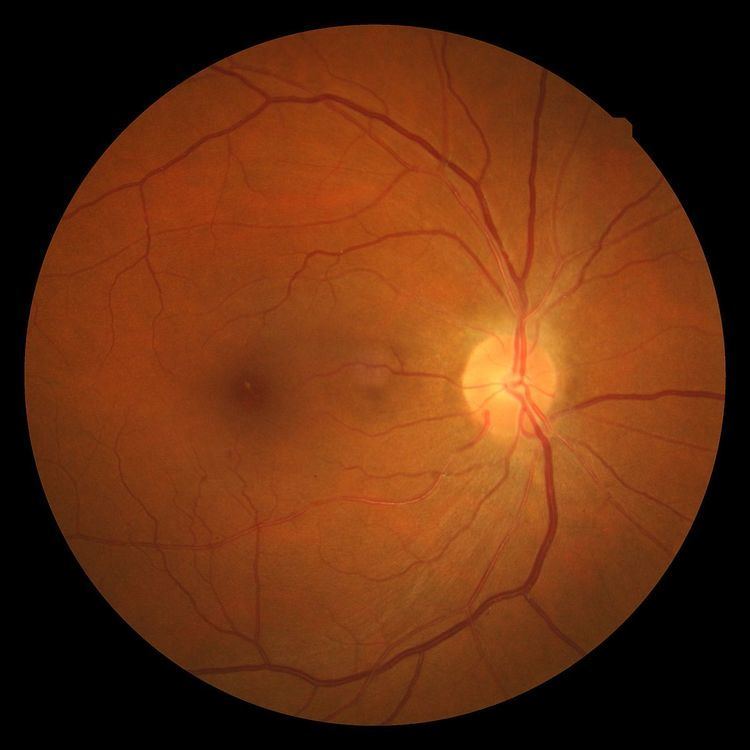Specialty ophthalmology ICD-9-CM 362.11 MeSH D058437 | ICD-10 H35.0 MedlinePlus 000999 | |
 | ||
Synonyms Latin: Fundus hypertonicus | ||
Hypertensive retinopathy is damage to the retina and retinal circulation due to high blood pressure (i.e. hypertension).
Contents
Signs and symptoms
Most patients with hypertensive retinopathy have no symptoms. However, some may report decreased or blurred vision, and headaches.
Signs
Signs of damage to the retina caused by hypertension include:
Mild signs of hypertensive retinopathy can be seen quite frequently in normal people (3–14% of adult individuals aged ≥40 years), even without hypertension. Hypertensive retinopathy is commonly considered a diagnostic feature of a hypertensive emergency although it is not invariably present.
Keith Wagener Barker (KWB) Grades
There is an association between the grade of retinopathy and mortality. In a classic study in 1939 Keith and colleagues described the prognosis of people with differing severity of retinopathy. They showed 70% of those with grade 1 retinopathy were alive after 3 years whereas only 6% of those with grade 4 survived.The most widely used modern classification system bears their name. The role of retinopathy grading in risk stratification is debated, but it has been proposed that individuals with signs of hypertensive retinopathy signs, especially retinal hemorrhages, microaneurysms and cotton-wool spots, should be assessed carefully.
Pathophysiology
The changes in hypertensive retinopathy result from damage and adaptive changes in the arterial and arteriolar circulation in response to the high blood pressure.
Differential Diagnoses
Several other diseases can result in retinopathy that can be confused with hypertensive retinopathy. These include diabetic retinopathy, retinopathy due to autoimmune disease, anemia, radiation retinopathy, central retinal vein occlusion.
Management
A major aim of treatment is to prevent, limit, or reverse target organ damage by lowering the patient's high blood pressure and reduce the risk of cardiovascular disease and death. Anti-hypertensive drug treatment may be required to control the high blood pressure.
